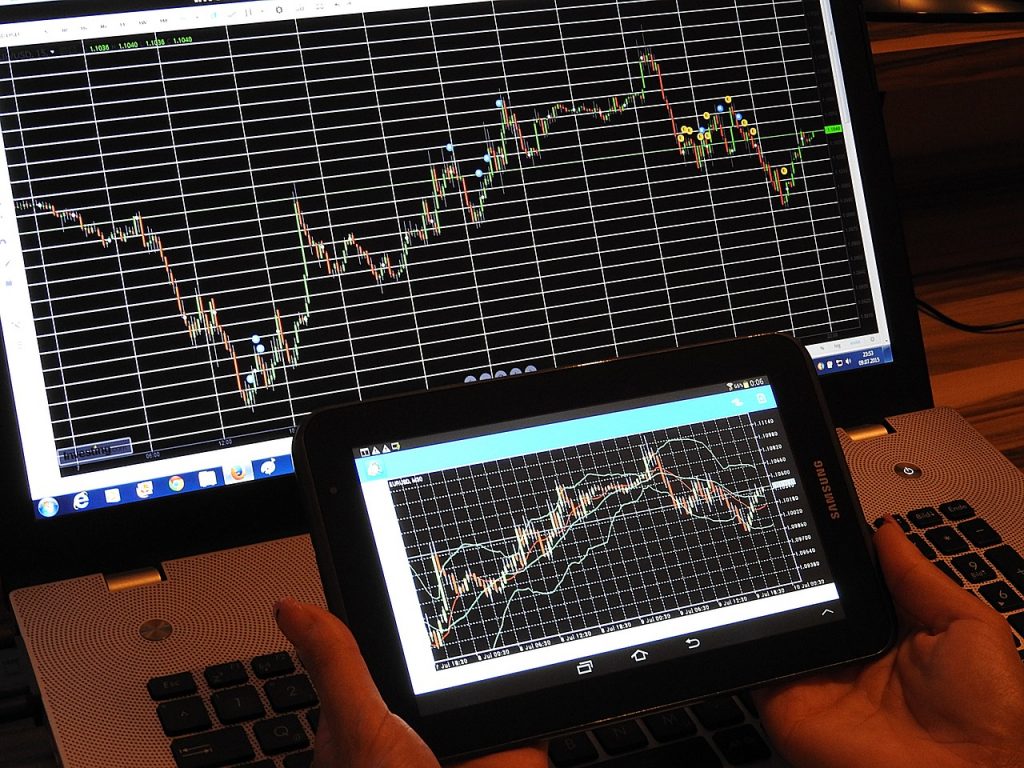Contents
A rising PSAR has a slightly different formula than a falling PSAR. Anderson is CPA, doctor of accounting, and an accounting and finance professor who has been working in the accounting and finance industries for more than 20 years. Her expertise covers a wide range of accounting, corporate finance, taxes, lending, and personal finance areas. We give calls from Monday to Friday in suggested intervals. In case we couldn’t get through, we will try again at the same time the next day. Get tight spreads, no hidden fees, access to 12,000 instruments and more.
- When a stock is rising, move the stop-loss to match the parabolic SAR indicator.
- This is because a reversal is generated when the SAR catches up to the price due to the acceleration factor in the formula.
- Let’s consider how the indicator works through the example of Ethereum in a trending market.
This scan starts with stocks that have an average price of $10 or greater over the last three months and average volume greater than 40,000. The scan then filters for stocks that have a bearish SAR reversal (Parabolic SAR (.01,.20)). This scan is just meant as a starter for further refinement. The scan then filters for stocks that have a bullish SAR reversal (Parabolic SAR (.01,.20)).
However, in my personal experience, the PSAR and ADX bundle work well together both in the cryptocurrency market and in stocks as well. After getting a signal to sell, open a position at the end of the candlestick located opposite the Parabolic dot marked with a blue circle . The fast parabola breaks in the area marked with the green circle. Few false signals and small delays during directional movement on the market. The idea is to buy when the dots move below the price bars and sell or short-sell when the dots move above the price bars.
Scanning for Parabolic SAR
When a stock is rising, move the stop-loss to match the parabolic SAR indicator. The same concept applies to a short trade—as the price falls, so will the indicator. Move the stop-loss to match the level of the indicator after every price bar. The parabolic SAR indicator appears on a chart as a series of dots, either above or below an asset’s price, depending on the direction the price is moving.

On a chart, the indicator appears as a series of dots placed either above or below the price bars. Conversely, a dot above the price is used to illustrate that the bears are in control and that the momentum is likely to remain downward. When the dots flip, it indicates that a potential change in price direction is under way. For example, if exness forex broker introduction the dots are above the price, when they flip below the price, it could signal a further rise in price. Short-term traders that want to enter and exit positions quickly may opt for a higher AF, which means that even small reversals will close them out of a trade. Longer-term traders that want to hold their positions may decrease the AF.
If the price is falling, use the highest high of those periods as the initial prior PSAR value. The average true range is a market volatility indicator used in technical analysis. The technical indicator uses a trailing stop and reverse method called “SAR,” or stop and reverse, to identify suitable exit and entry points.
Price chart of EURUSD in real time mode
The pattern is considered a continuation pattern, with the breakout from the pattern typically occurring in the direction of the overall trend. The following chart shows a downtrend, and the indicator would have kept the trader in a short trade until the pullbacks to the upside began. When the downtrend resumed, the indicator got the trader back in.

On the downside, the Parabolic SAR produces false signals when the price action starts moving sideways. Due to the lack of a trend, the indicator will move back and forth around the price bar, and this produces misleading signals. When a trader solely relies on the Parabolic SAR during sideways market conditions, it can result in losing trades.
Investing involves risk, including the possible loss of principal. The indicator utilizes a system of dots superimposed onto a price chart. This script calculates the cumulative and average gain/Loss of rising SAR following a wpf dynamically setting number of rows price crossover of SAR. The cumulative and average gain/Loss of falling SAR following a price crossunder is also measured. Changes to the parameters of SAR will return the requisite calculations for evaluating performance….
After getting a signal, open a long position at the blue line. At the same time, PSAR does not try to guess the extreme point of the movement. When graphically plotted on a chart, the Parabolic SAR indicator is displayed as a series of dots. If it appears below the current price, the parabolic SAR is interpreted as a bullish signal. When it is positioned above the current price, it is deemed to be a bearish signal.
Interpreting Parabolic SAR
The PSAR only needs to catch up to price to generate a reversal signal. For this reason, a reversal signal on the indicator doesn’t necessarily mean the price is reversing. A counter-argument to the parabolic SAR is that using it can result in a lot of trades. Some traders would argue that using the moving average alone would have captured the entire up move all in one trade. Therefore, the parabolic SAR is typically used by active traders who want to catch a high-momentum move and then get out of the trade. The parabolic SAR is also a method for setting stop-loss orders.

The SAR signals, like those of other indicators, should only be used for closed candles. All three conditions for opening a long position are met. After the signal candle closes, we enter the market at the blue line.
What is Parabolic SAR?
This contrast makes it easier to compare the indicator with the price action of the underlying security. Results obtained from the calculations above create a dot that is plotted against the asset price action, either below or above it. The dots help to determine the current direction of the price. In trading, it is better to have several indicators confirm a certain signal than to rely solely on one specific indicator. Complement the SAR trading signals by using other indicators such as a stochastic, moving average, or the ADX. It works best in a trending market with long rallies and declines.
I will separately consider five trading strategies that work with the SAR as financial instruments in order to determine trend direction. The parabolic indicator generates a new signal each time it moves to the opposite side of an asset’s price. This ensures a position in the market always, which makes the indicator appealing to active traders. The https://forexhero.info/ indicator works most effectively in trending markets where large price moves allow traders to capture significant gains. When a security’s price is range-bound, the indicator will constantly be reversing, resulting in multiple low-profit or losing trades. The parabolic SAR is used to gauge a stock’s direction and for placing stop-loss orders.
This will result in the price needing to make bigger moves to cause a reversal, and thus reversals and trade signals will occur less often. The first dot of the indicator pushes away from the local high in a bearish trend or the low in a bullish trend. When the price level crosses the level of the last SAR dot, the indicator starts counting anew from the opposite side of the price chart. The second option is the combined Parabolic SAR strategies.
Trading on Parabolic SAR with AvaTrade
Should SAR be above one of those lows, use the lowest of the two for SAR. Ideally, utilize a spreadsheet where the high and low price, SAR, EP, and AF can be tracked on a period-by-period basis. Use an AF of 0.02 initially, and increase by 0.02 for each new extreme high or low . Monitor price for at least five periods or more, recording the high and low .
If the price is moving in no apparent direction, then it will seesaw across the parabolic SAR, resulting in multiple unprofitable trades. You should make sure you have the appropriate risk management measures in place. The risks of loss from investing in CFDs can be substantial and the value of your investments may fluctuate. 75% of retail client accounts lose money when trading CFDs, with this investment provider. CFDs are complex instruments and come with a high risk of losing money rapidly due to leverage. You should consider whether you understand how this product works, and whether you can afford to take the high risk of losing your money.
Demo Account – Try out different Parabolic SAR strategies with an AvaTrade demo account. Use this account to boost your trading accuracy, without the risk of losing any money. A losing strategy will become profitable trading if you just change the type of open and closed positions. For example, you can close a position only by a take profit, and open positions — by a limit order. But the instrument readings on the last candlestick may change before it closes.
Indicators, Strategies and Libraries
When the EMA 10 crosses the two lines, the EMA 25 and the EMA 50. This method itself results in a loss of profit due to a delay in the response of the moving averages. Therefore, it is better to use it together with a trailing stop.